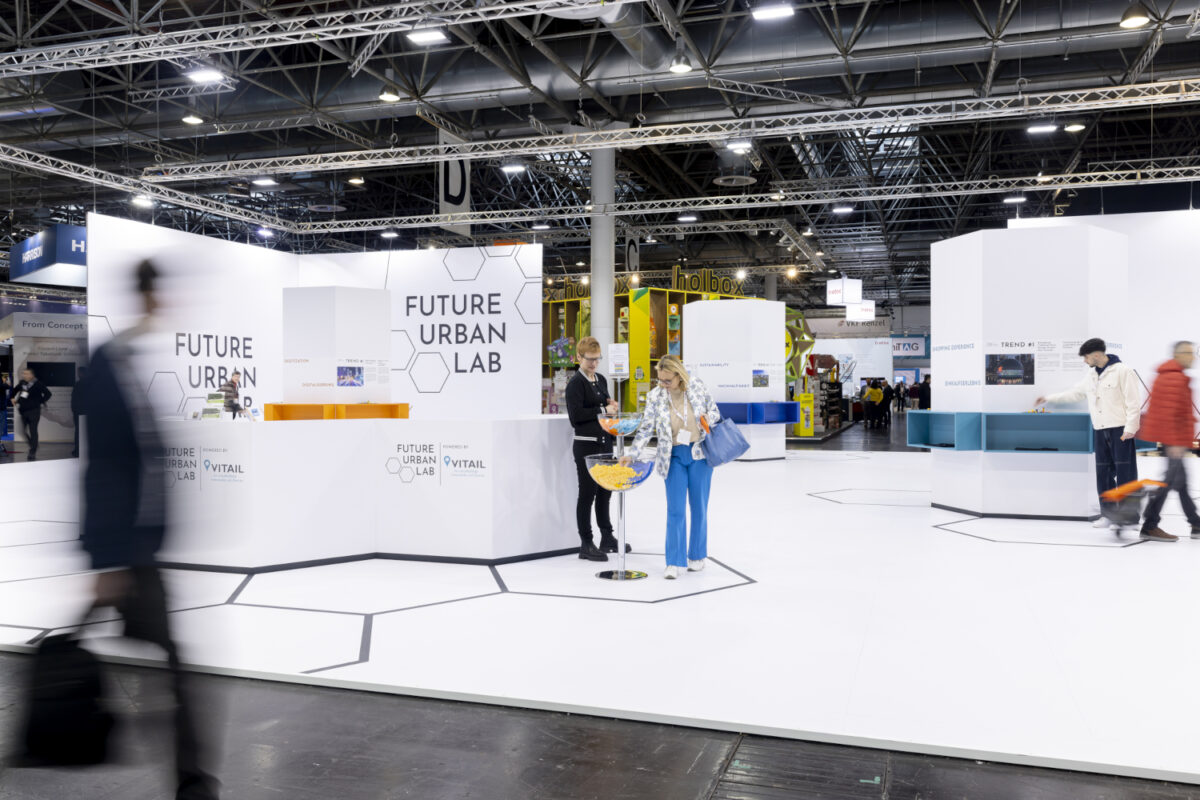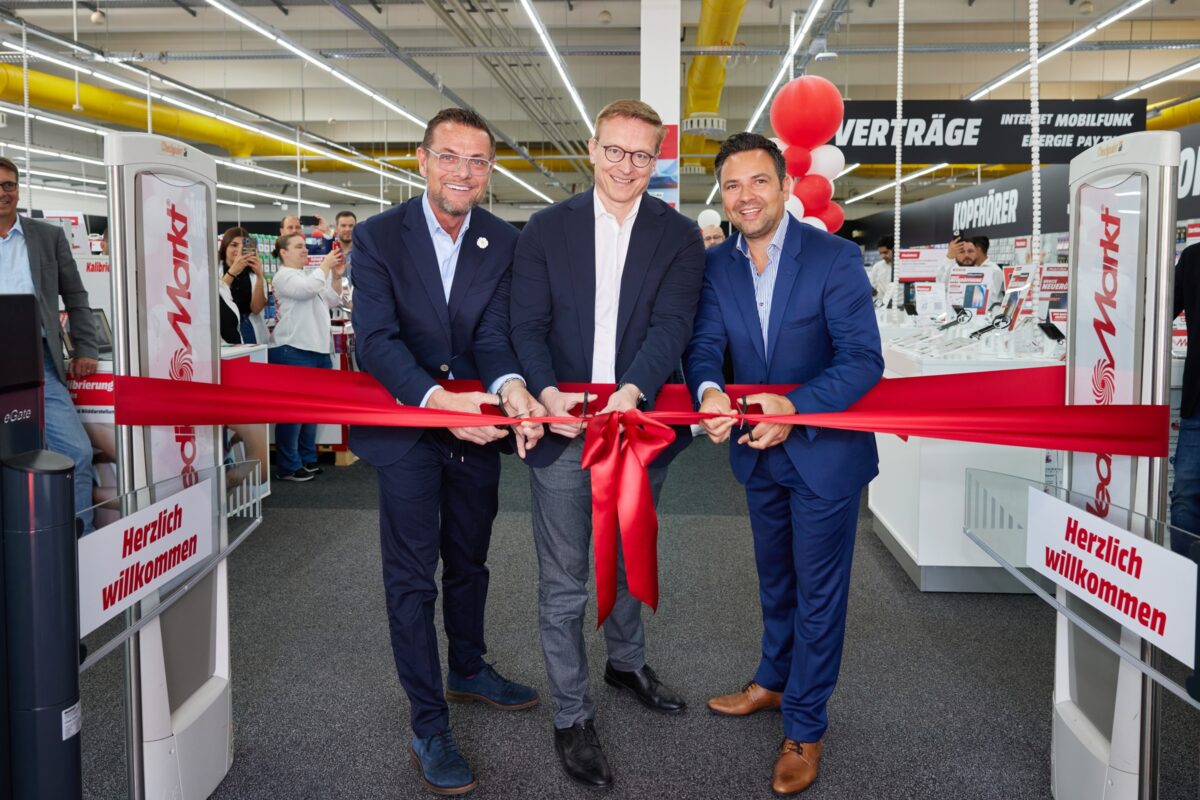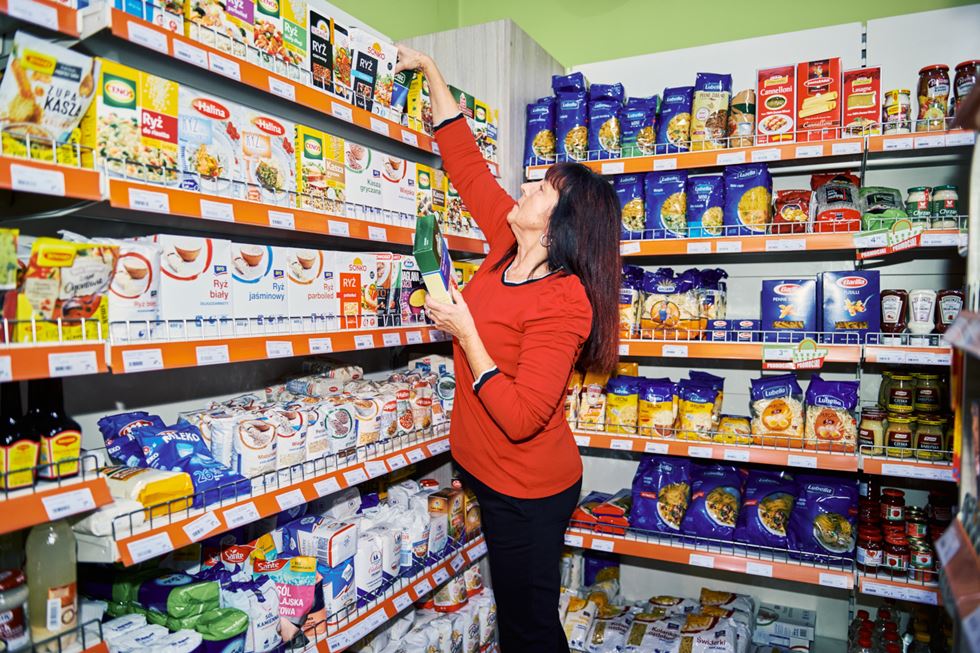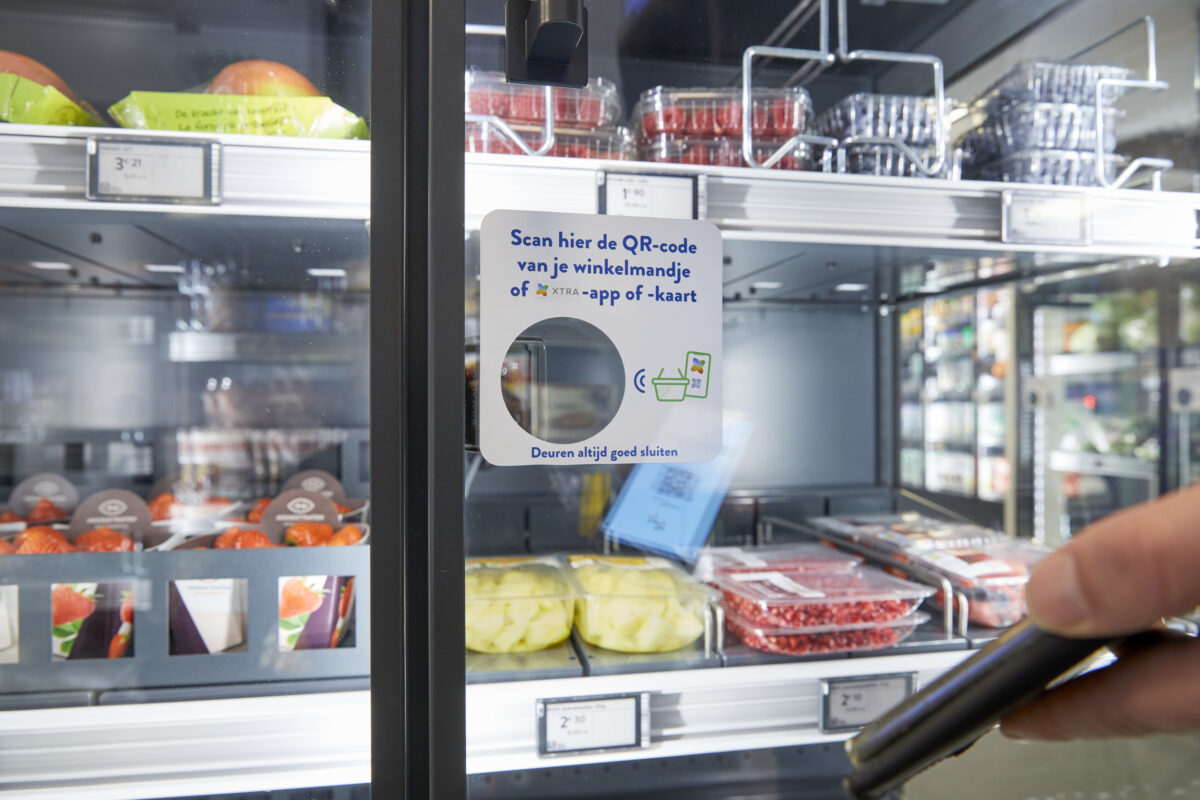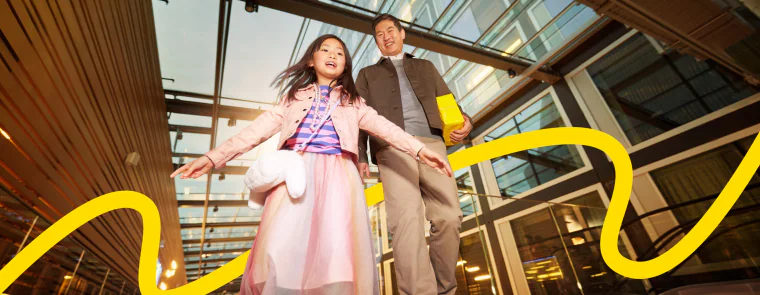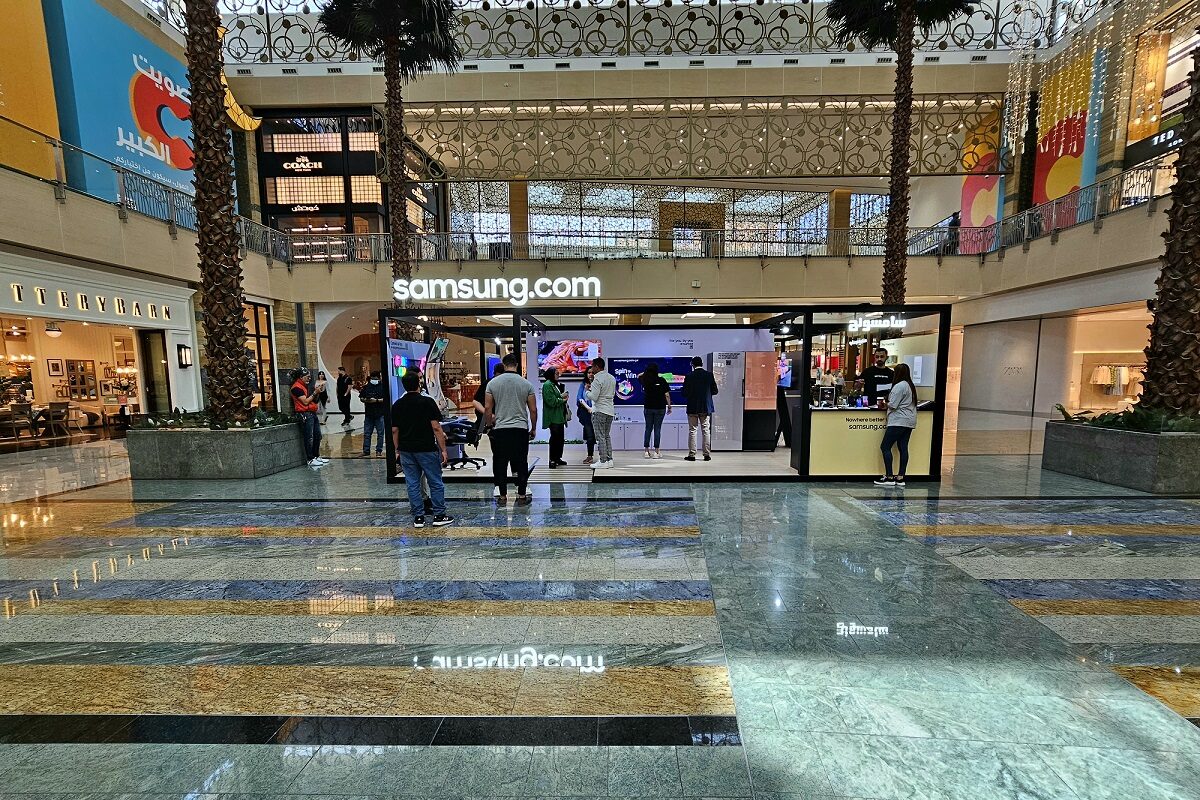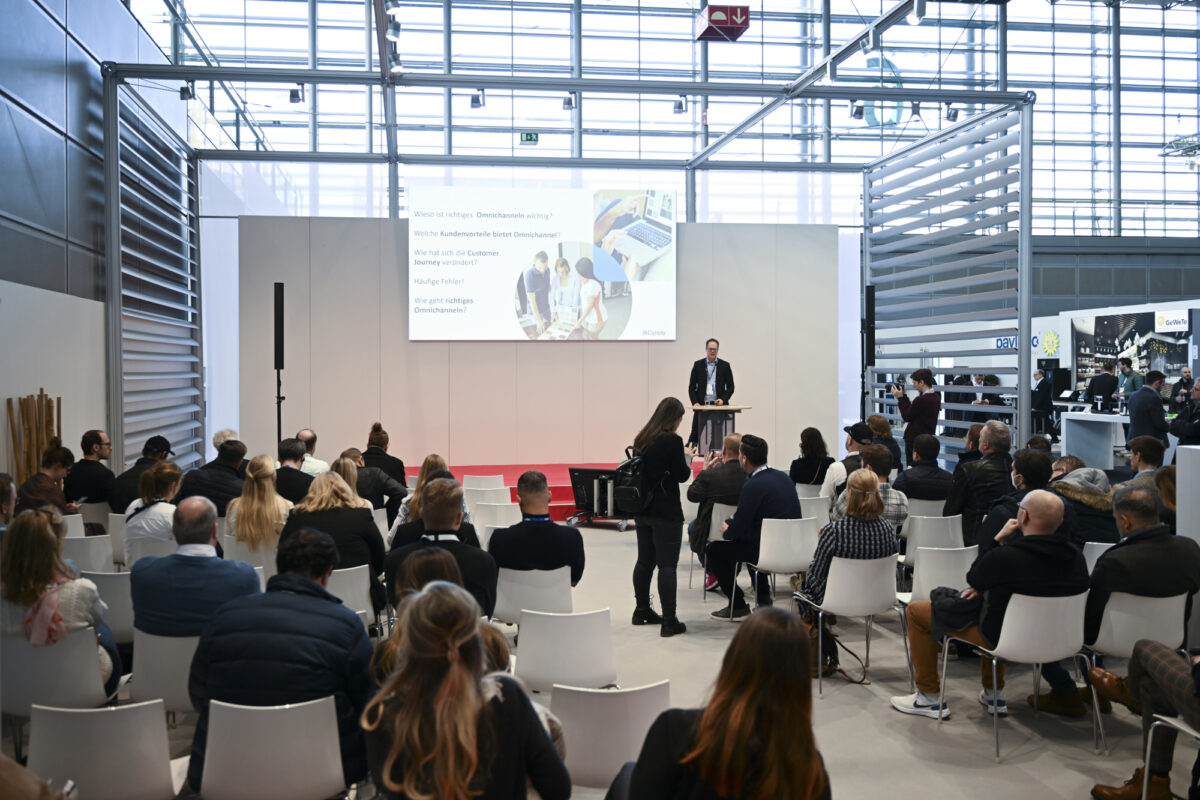“Stadtlabore für Deutschland” wants to combat retail vacancies in a targeted manner
by Kyra Molinari (exklusively for EuroShop.mag)
For customers, online shopping is often the easier and more convenient way. For city centers, however, this results in increased vacancies, which are slowly killing off our urban centers. The consortium “Stadtlabore für Deutschland” (English: City Labs for Germany) wants to counteract this with innovative ideas and corresponding solutions. The aim is to develop a digital platform for proactive settlement management in city centres and thus create standards for dialogue-oriented cooperation in the vitalisation process of city centres.
In this interview, Dr. Eva Stüber, member of the management of IFH COLOGNE, explains what the work of IFH Cologne in cooperation with 14 model cities looks like and what opportunities she sees for the brick-and-mortar retail in the future.
Why is the topic of city marketing becoming more and more important these days?
Dr. Eva Stüber: A modern city center must achieve an individual positioning along a strategy that makes it attractive. This is about which functions or roles are to be fulfilled, which target groups are to be reached and how the city center is to be perceived. A multifunctional mix of providers contributes to this, which, in addition to retail and gastronomy, also takes into account culture, handicrafts, education, health, leisure, social, services and also administration according to the respective positioning. The megatrends “climate-friendly” and “digital” can become visible at various levels: From the mobility options when travelling to the increased quality of stay through greening or the resource-saving selection via the app. For the municipality, but also for all user groups, the focus is on customer-centered, cooperative and goal-oriented design.
What is to be achieved with the consortium?
Stüber: The “City Lab Vacancy and Settlement” has been actively working since September 2021. The goal is to vitalize city centers: new concepts for more diversity and the potential of new business models can unfold and real added value becomes possible for citizens. The basis for this is a digital platform. This can be used not only to view the status quo in terms of vacancies, but also for proactive settlement management – a Tinder for inner city real estate. In addition to developing and testing the technological basis, dialogue is promoted and a common data basis is developed, whereby scenarios can be proactively recognized and thus alleged vacancies can be counteracted.
How did the consortium come about, why is your work so important?
Stüber: In a series of workshops initiated by the then Minister of Economic Affairs in autumn 2020, which Boris Hedde helped to develop and shape, vacancy management was one of the burning issues. The further developed ideas were taken up by the Federal Ministry of Economics and Climate Protection and the development and implementation of a corresponding solution approach was commissioned. It was clear that the development could not take place at a desk, but that model cities had to be on board for testing. Heterogeneity was decisive in the selection of the model cities: a good distribution in terms of regionality and city size classes ensures that the findings collected during the trial have a high informative value for the municipalities in Germany. In addition, innovativeness and speed of implementation played a role – after all, there is not much time available for the implementation of the project. The model cities are: Bremen, Erfurt, Hanau, Karlsruhe, Cologne, Langenfeld, Leipzig, Lübeck, Lüneburg, Mönchengladbach, Nuremberg, Rostock, Saarbrücken and Würzburg.
To what extent does the pandemic present you with changed or special challenges in your work?
Stüber: Inner city locations have been challenged not only since the corona pandemic and the factors are manifold: demographic change, digitalization and changing consumer behavior as well as chain shops, large-scale concepts and rising rents are fueling the death of shops. The pandemic is accelerating the speed of this development. We are countering this with a correspondingly short project duration: development and testing with the model cities will run until the end of the year so that the municipalities are quickly put in a position of control. The roll-out throughout Germany is scheduled for 2023.
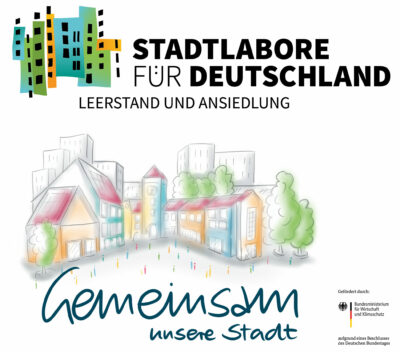
Source: Stadtlabore für Deutschland
What are your research priorities?
Stüber: The platform, content and processes must both meet the requirements in the municipalities and be integrable into the existing structures. The core tasks of the 14 model cities are to participate in the development and to test the platform in the individual development steps. The focus of the individual model cities is oriented towards the status quo on site. This is also visible in the individual projects that are running locally. These are, for example, in the real estate dialogue, analyses of various frequency measurement methods, the visualization of data and development of 3D models, the establishment of early detection systems for vacancies and strategic questions on city positioning.
How will the solutions developed in the consortium be implemented?
Stüber: The findings from the testing will flow into the next development steps, those from the individual projects will be made available to the other model cities and integrated into the platform and the approach if there is a corresponding added value. Shared learning is the top priority. Overall, the way of working in the project is dialogue-based and agile.
Have you already been able to implement your first projects? If so, what experience did you gain?
Stüber: In the project, we work in an agile manner in order to learn and improve quickly. For example, the prototype was rolled out in a very early project phase last year, which includes the first functionalities for vacancy and commercial space management. Appropriate training has been provided for the model cities, already collected or existing vacancy and commercial property data has been read in and on-site testing is underway. One thing is clear: the platform alone will not work. Equally decisive are the corresponding data and the people who are involved with the settlement. The further development of the platform takes place continuously on the basis of the requirements and feedback from the model cities, which are systematically recorded and collected.
What advantages does the project offer specifically for retailers?
Stüber: Brick-and-mortar retail is easier to operate when it is embedded in an attractive environment. This environment can be created through the control option of the digital platform. This makes it easier to do business. In addition, expansion in the area of site selection is also simplified and options for interim use are visible, which in addition to speed also brings a new flexibility that is particularly in demand nowadays.
What possibilities and opportunities do you see for the retail sector when the pandemic is over or at least subsides? Do you think retail will recover?
Stüber: Regardless of the pandemic, stationary retail was in a transformation phase – developments are currently accelerating. For retailers, it is therefore important to continue to work consistently on their business models and to adapt the value proposition to the prevailing needs. Despite increasing online-ization, there will still be brick-and-mortar retail – but with new concepts that no longer focus exclusively on the products. In times with lower infection figures, pressure will then also be taken off the trade that arises from the implementation of hygiene measures and at the same time more space will be created for activities such as workshops and services, which will serve to further develop the business models.






